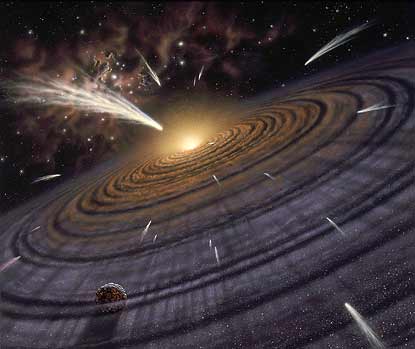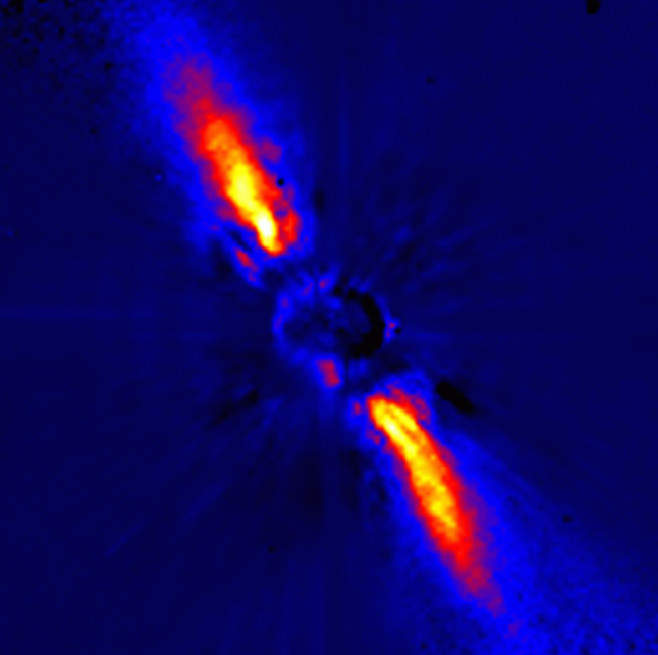 Proto-Solar Nebula
Proto-Solar Nebula
Early in the Sun's life, material left over from its formation
lied in an extended flat disk of planetary debris.
With time, much of this material collected near the Sun to form the Terrestrial planets (Mercury, Venus, Earth and Mars) with rocky surfaces. They contained lots of 'heavy elements'.
Further from the Sun, the Jovian Planets (Jupiter, Saturn, Uranus and
Neptune) with very gaseous extended atmospheres, formed. These
planets contain mostly H & He, like the Sun.
Additional debris, which did not find itself in planets, went into
forming Astroids, Comets and the lesser (minor) planets, such as Pluto.

Sounds like a nice theory, but is there any direct evidence that planetary systems form in this way? A resounding YES.
Extra-Solar Planetary Disks
Proto-planetary disks have been seen for over a decade.
We see proto-solar systems around some stars when we block out
the very bright central star. This shows us that planetary systems
are not unique to our Sun. By studying such systems around other stars, we
can study the formation and evolution of planetary systems.
Protoplanetary Disks
 Sometimes nature can do the work for us. Toward the very young cluster
of Orion, young stars and proto-stellar systems are abundant. Because
the cluster is nearby, the spatial scale allows us to view objects about
the size of typical solar systems. Even with the knowledge astronomers
had from studying Beta Pic stars, and theories on planetary formation,
no one had expected to see such explicit images of disks as was seen by
The Hubble Space Telescope in the Orion Star Cluster.
Sometimes nature can do the work for us. Toward the very young cluster
of Orion, young stars and proto-stellar systems are abundant. Because
the cluster is nearby, the spatial scale allows us to view objects about
the size of typical solar systems. Even with the knowledge astronomers
had from studying Beta Pic stars, and theories on planetary formation,
no one had expected to see such explicit images of disks as was seen by
The Hubble Space Telescope in the Orion Star Cluster.
The star at the center is seen as bright (white) while the slightly flared disk of material, is seen edge-on. The proto-planetary disk surrounds the young star, blocking its light and making a dark patch across it.